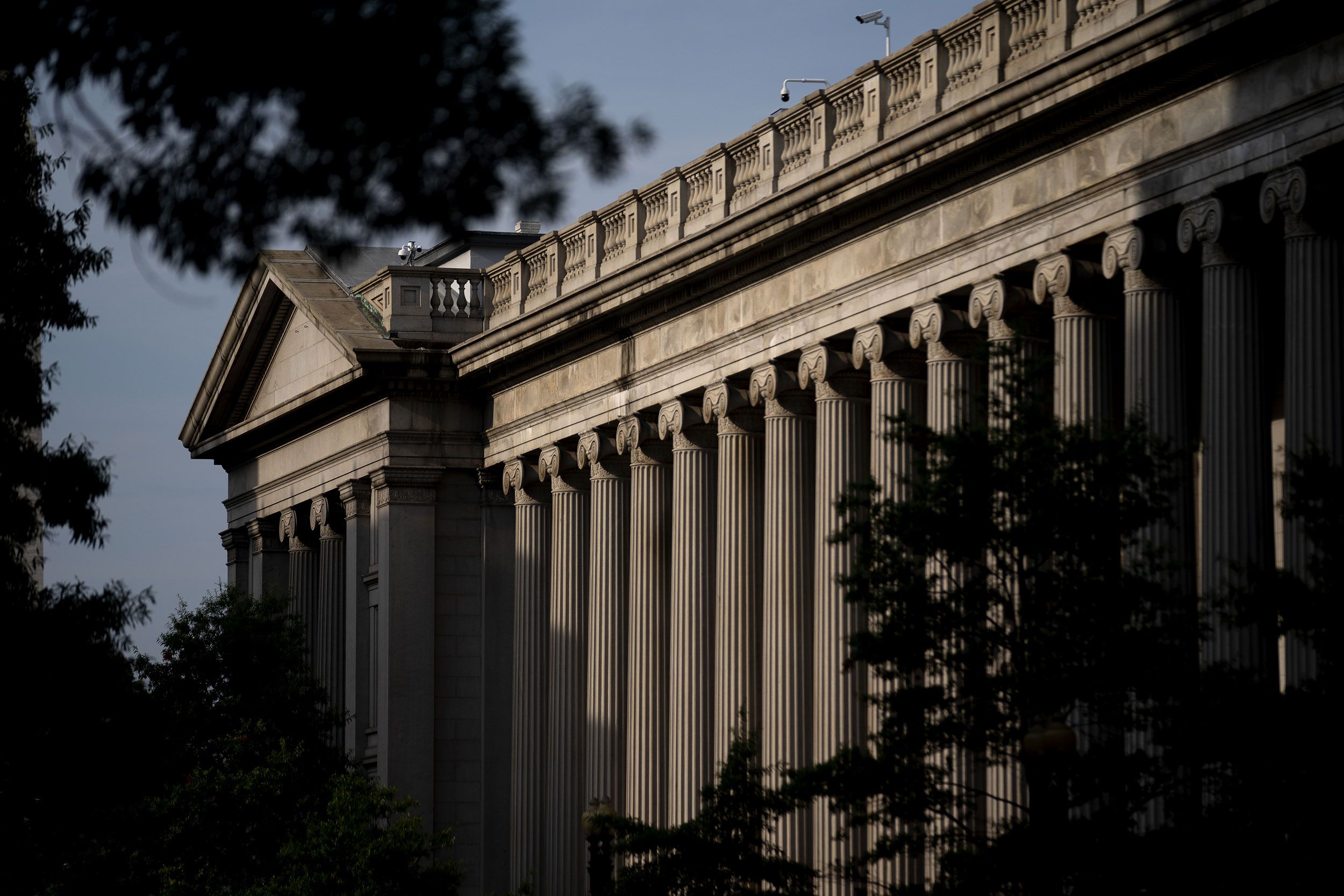From the beginning of President Donald Trump’s administration, Elon Musk’s so-called Department of Government Efficiency (DOGE) had a plan to monitor USAID payments and was preparing to use US Treasury Department systems to halt them, according to new court documents, emails, and affidavits obtained by WIRED.
Court documents in Alliance for Retired Americans et al v. Bessent et al and American Federation of Teachers et al v. Bessent et al reveal the extent of DOGE’s penetration into the most sensitive systems at the Treasury, including the Bureau of Fiscal Service (BFS), and what exactly DOGE was hoping to accomplish. The bureau is nested within the US Treasury and handles most federal payments, to the tune of more than $5 trillion a year.
WIRED first reported that Marko Elez, a former engineer at X, the social media company owned by Musk, had read/write access to two BFS systems: the Payment Automation Manager (PAM) and Secure Payment System (SPS). But documents now reveal that Elez also had “read” access to Automated Standard Application for Payments (ASAP), an accounting system where federal funds are stored in pre-authorized accounts. Court documents shared by the government reveal Elez had access as of February 1.
From court filings, it appears this access was in service of the administration’s plans to target USAID.
USAID was one of the earliest targets of DOGE and the Trump administration. Less than two weeks after Trump’s inauguration, the majority of the agency’s staff were placed on administrative leave, and funding to many partner organizations was cut off. The documents appear to show how plans were in place for this sudden strangulation in payments to happen.
In a January 26 email between Matthew Garber, a top Treasury official, and the Treasury secretary’s chief of staff, Garber outlined the new administration’s plan to utilize BFS access to halt payments to USAID.
“Fiscal will intercept USAID payments files prior to ingestion into our PAM/SPS systems (this is in place now and can begin immediately),” Garber wrote. “We developed a process to intercept the file, and additional flags to ensure we catch all USAID payment requests through our systems.” (This email chain was included as part of documents shared in the Alliance for Retired Americans lawsuit.)
“Fiscal will manually pull an unredacted and unmodified copy to share with State officials,” Garber continued, outlining plans from his team. “State officials will review and provide a determination to Fiscal on whether or not to release the file into our normal payment processes.”
A top Treasury official’s calendar shows that a few days later, Elez arrived in Kansas City, one of the main BFS sites, and had a full docket of meet and greets and several deep dives with the teams responsible for each of the systems. The plan was for Elez to spend the next month at the facility to identify “opportunities to advance payment integrity and fraud reduction goals.” According to a planning sheet, which was also shared with the court, “only (1) individual (i.e. the designated technical team member)”—which was Elez—“requires access to Fiscal Service systems and data at this time.”
Records show that in the final days of January, a request was placed to grant Elez access to both systems. On January 31, David Lebryk, who had been acting Treasury secretary and at one point was the commissioner of BFS, abruptly announced he would retire after he had been placed on administrative leave for refusing to provide DOGE with access to these payment systems. For those who knew the Treasury intimately, this set off alarm bells. That same day, according to an attachment provided by the government, at 6:07 pm, a ticket was filed disregarding a previous order just a day before to give Elez just read-only access: “sorry read/write is needed.”
At the same time Lebryk stepped away, DOGE gained access to the entirety of USAID’s IT systems and network, according to reporting from ProPublica. The next day, as the dismantling of USAID was underway, according to court documents, Elez was granted access to the source codes of ASAP, SPS, and PAM. He was also granted read-only access to the production database for the SPS and PAM.
People with knowledge of Treasury systems tell WIRED that it would be uncommon, if not “unheard of,” for a BFS employee to have access to all these systems simultaneously.
“Within Fiscal, the mainframe guys don’t have write access to the databases and vice versa,” says a former BFS employee who requested anonymity in order to speak freely. Normally, they say, employees at BFS are given the minimum amount of access to systems required to do their jobs. “No BFS employee would normally have this kind of access.”
According to an affidavit from another top Treasury official, though, that plan to isolate USAID payment files outlined by Garber was temporarily paused for the next several days—the State Department had decided it would instead intercept the files. However, on February 4 and February 5, USAID payments flowed to the PAM portal designed by Garber’s team.
That same affidavit outlined the next steps: BFS was instructed to focus on flagging, quarantining, and sending several payments to State officials that fell under President Donald Trump’s foreign aid executive order that stated there would be a 90-day pause on this aid as the State Department reviewed each program. This plan, according to an email chain included in one of the lawsuits, was vetted by Treasury secretary Scott Bessent, who was “comfortable proceeding.” These payments, which originated from the Department of Health and Human Services, included funding for “Refugee and Entrant Assistance,” “Gifts and Donations Office of Refugee Resettlement,” and “Refugee Resettlement Assistance.”
By then, Musk had doubled down on his contempt for USAID: In a February 2 post on X, Musk wrote, “USAID is a criminal organization. Time for it to die.”
DOGE operatives, including Luke Farritor, a young member, had gained “super administrator” access to USAID’s systems, according to ProPublica. Farritor, who had also been at the Department of Health and Human Services as well as the General Services Administration (GSA), was reportedly going through USAID’s payment system manually, shutting off agency funding, according to The Washington Post. Elez was in the midst of a similar operation in Kansas City: According to that Treasury official’s affidavit, the engineer began to manually identify and review the foreign aid payment files that had been sequestered in the folder Garber outlined in that late January email.
Meanwhile, Treasury officials sought to give Elez even further access. A February 3 IT ticket, included in case documents from the Alliance for Retired Americans lawsuit, reveals that requests were made for Elez to access the Central Accounting Reporting System, “the electronic system of record for the government’s financial data.”
That same day, a motion filed by the plaintiffs in another lawsuit alleges Elez copied and downloaded a pair of USAID files from the PAM database to his laptop; around that same time, an affidavit from the Bureau of Fiscal Service’s chief security officer said Elez emailed a spreadsheet with personally identifiable information to two GSA officials via unencrypted channels. (Both of these actions are at the core of one of the lawsuits against Bessent and the Treasury Department; the plaintiffs in that suit were recently granted expedited discovery to access records related to Elez’s tenure at BFS.)
A DOGE team had already established a presence at the GSA, which included Farritor, as well as former Tesla employee Thomas Shedd and other DOGE members Ethan Shaotran and Edward Coristine.
After WIRED reported on February 4 that Elez had unprecedented access to the Treasury’s payments systems, Bessent asserted in a letter to Congress that Tom Krause, then a special government employee associated with DOGE at the Treasury, only had “read” access. Elez was not mentioned in that letter. In her memo granting a preliminary injunction in the American Federation of Teachers lawsuit, filed on March 24, Judge Deborah Boardman wrote, “according to a spreadsheet attached to a February 3, 2025 email from a Treasury executive point person for the engagement, as of February 1, Elez had access to Treasury systems including PAM, SPS, and ASAP, and it was recommended that his access to other Treasury systems be expanded.”
On February 5, while Elez had access to Treasury’s most sensitive systems, he received an email from the deputy assistant commissioner for enterprise IT operations noting that, though he had been issued a BFS laptop, he had yet to sign the bureau’s “rules of behavior.” (This email was included among documents shared by the government in one of the lawsuits.) Those rules include, following “laws, regulations, and policies governing the use and entrance to such facilities,” and protecting any “Fiscal Service data, equipment and IT systems from loss, theft, damage, and unauthorized use or disclosure.” Elez, it would appear, had already violated these rules by sharing the data with the GSA officials.
The next day, Elez resigned after the The Wall Street Journal sought comment for a report about racist posts on social media accounts that appeared to belong to him. Elez is now one of the many DOGE operatives working at the Social Security Administration.
In late February, USAID said it would cancel 90 percent of the agency’s contracts. The contract cancellations threw nonprofits around the world into chaos and slowed the response to infectious diseases. Earlier this month, a federal judge said the dismantling of USAID “likely violated the United States Constitution in multiple ways.”
The Treasury did not immediately respond to a request for comment.
This week, Trump signed an executive order stating that all federal payments should be consolidated within the Treasury. The order claims that doing so will help fight fraud, waste, and abuse.
Don Moynihan, a professor of public policy at the University of Michigan, believes the order means that, “instead of having to send some DOGE guy into an agency to control the payments, it all happens in one place. It moves power away from agencies and centralizes it in the White House.” In his order, Trump claimed that $1.5 trillion passes through other avenues, known as non-Treasury disbursing offices. These are nested within certain agencies that are able to disburse funds without going through the BFS system.
Moynihan alleges that the strangulation of USAID’s funding could be a “harbinger” of potential changes at other agencies. The administration appears particularly focused, he says, on “the president having absolute power and control over where money goes regardless of laws on impoundment or statutes on agencies.”
“It’s a consolidation of power in the name of efficiency,” he claims.




